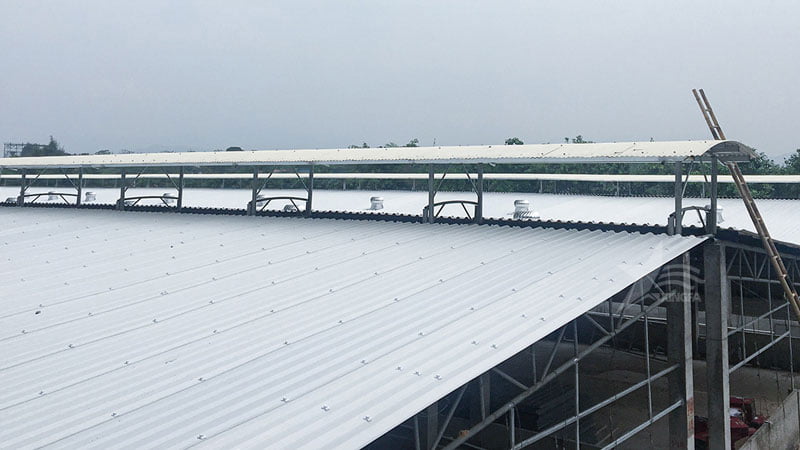Installing PVC roof tiles requires careful planning and attention to detail to ensure a watertight and durable roofing system. Here’s a general guide to installing PVC roof panels:

- Preparation: Ensure the roof deck is clean, dry, and free from any debris or obstructions. Repair any damaged areas and ensure the roof structure is sound. Install appropriate underlayment or vapor barrier if needed.

- Layout: Plan the layout of the tiles, considering the roof’s dimensions, slope, and any architectural features. Start from the lowest point of the roof and work your way up, overlapping tiles in the direction of water flow.
- Fastening: Secure the tiles to the roof deck using appropriate fasteners such as screws or nails. Follow the manufacturer’s recommendations for spacing and placement of fasteners to ensure proper attachment and wind resistance.
- Cutting: Use a sharp utility knife or saw to cut tiles as needed to fit around roof penetrations, edges, or angles. Measure carefully and make clean, precise cuts to maintain the integrity of the roofing system.
- Overlap: Install each tile with the appropriate overlap according to the manufacturer’s instructions. Ensure that tiles overlap correctly to prevent water infiltration and maintain the roof’s waterproofing integrity.
- Sealing: Apply sealant or adhesive as recommended by the manufacturer to seal overlaps, edges, and penetrations. This helps prevent water leakage and enhances the roof’s weather resistance.
- Ridge and Hip Installation: Install ridge caps and hip tiles along the roof ridges and hips using the manufacturer’s recommended installation method. Ensure proper overlap and secure them in place with fasteners or adhesive.
- Ventilation: Install roof vents or ventilation systems as needed to provide adequate airflow and prevent moisture buildup in the attic space. Follow local building codes and manufacturer recommendations for ventilation requirements.
- Inspection: Once the installation is complete, inspect the roof carefully for any gaps, loose tiles, or areas that may require additional sealing or reinforcement. Make any necessary adjustments or repairs to ensure a watertight seal.
- Maintenance: Regularly inspect and maintain the roof to prolong its lifespan and ensure optimal performance. Clean debris from the surface, check for signs of damage or wear, and make repairs as needed.

It’s important to follow the manufacturer’s specific installation instructions and recommendations for the PVC roofing tiles you’re using, as techniques and requirements may vary depending on the product. Additionally, consider consulting with a professional roofing contractor for complex installations or if you’re unsure about any aspect of the process.
